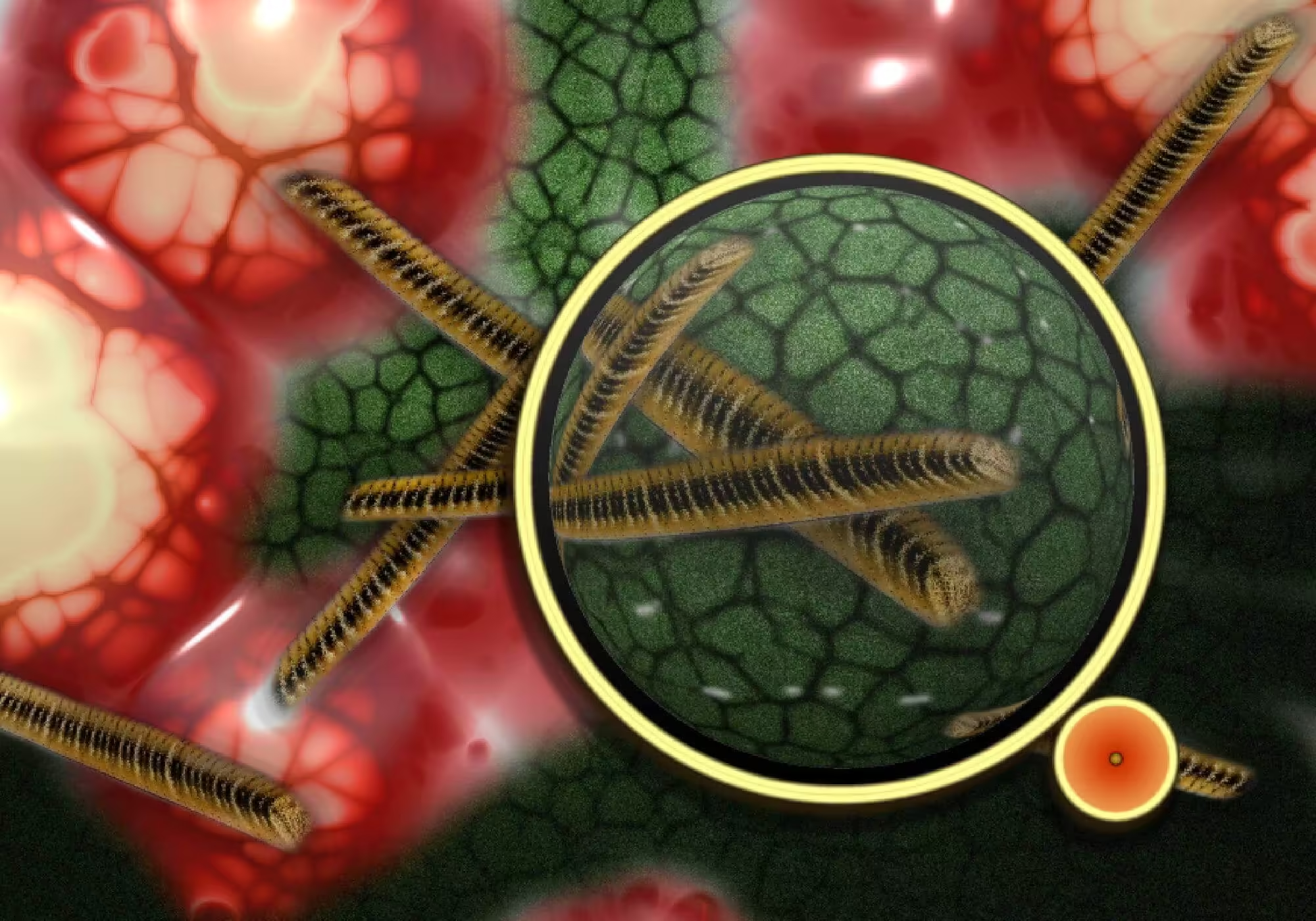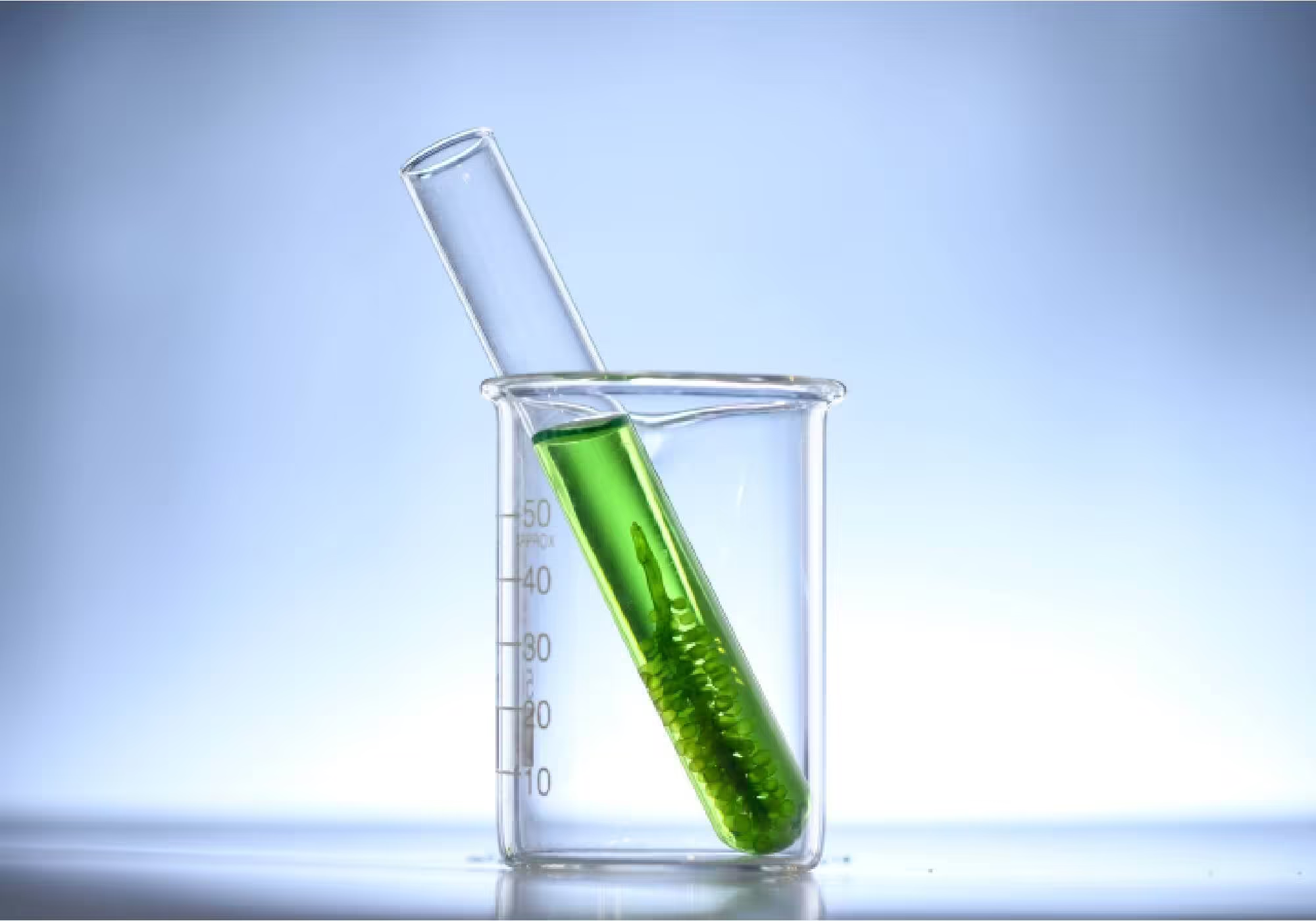Small but powerful forces that are influencing every corner of our world, microbes. It is important that life is alive with microbes. Everything from the soil we walk on to the food in our bodies is affected. To a large degree, we are in their hands: microbes typically make up the majority of human health and immunity. They are important to the environment and to many systems we depend on. in our world. Microbial ecology plays an important role in keeping life alive. They affect everything from the soil we walk on to the food we eat and even our own bodies. Although we can not see them, microbes largely contribute to human health. They play an essential role in the environment and on many systems we rely on. So let’s see how these tiny creatures affect human health, ecosystems, and more. Microbes in our daily life Microbes are found everywhere around us in the world. They are found in the air, water and even inside our bodies. But we can not see them because they are too small to see them. However, they stay very busy to make life run smoothly. These are some methods, that microbes affect our daily life. Without these microbes, life as we know it would struggle to survive. The “invisible” helpers are responsible for many things we often take for granted. How Microbes Keep Us Well Microbial ecology is more complicated than just nature and food. Because, these microbes are just like nature’s recycling team. They decompose dead plants and animals, turning them into nutrients for the soil. They transform them into nutrients. These nutrients are then used to empower engines as a biofuel. Our Own Ecosystem The human microbiome, the collection of microbes that live inside us, is like a tiny ecosystem. These tiny organisms help maintain balance in our bodies. For example: Body System Microbial Role Digestive Aid digestion, help nutrient absorption Immune Strengthen immune defenses, fight harmful germs Skin Protect against harmful bacteria and infections These microbes act as partners in health. They help digest food, protect us from harmful bacteria, and keep our immune systems strong. When the microbiome is in balance, we feel good and function well. But when it’s out of balance, it can lead to issues like digestive problems and immune deficiencies. Beneficial Microbes and Disease Prevention Direct harmless by all sorts of microbes, particularly in the gut, prevent us from diseases. Good examples of such pro-dictates are probiotics. These are the “good bacteria” which prevent digestive problems and improve the health of your gut. Improving immunity, reducing inflammation and supporting overall wellness is promoting good bacteria. Environmental Impacts of Microbial Life Microbes play a vital role in ecosystems and help in to keep the environment in balance. 1. Microbes in Ecosystems Microbial ecology shows that microbes serve as a natural cleaner. They break down organic material, recycle nutrients, and keep ecosystems functioning. As Carl Woese, a pioneering microbiologist, once said, “The truth is, microbes run the world.” Microbes Fighting against Pollution and Climate Change Some microbes also help in the break down of harmful pollutants, and making them powerful companions of the environment. Some bacteria are capable of decomposing oil spills, while others can remove harmful chemicals from soil and water. Through these processes, microbes contribute to pollution control and help in to reduce environmental damage. Microbial ecology opens our eyes that how these tiny creatures are impactful in every part of our lives. These tiny organisms play a role in keeping us healthy. They support our ecosystems. They even help in cleaning up our environment. As we learn more about microbial ecology, we discover new ways to use them in more processes. They aid both our health and planet. By respecting microbial ecology, we can protect these invisible forces. Understanding them allows us to benefit from their significant role in our world. References
Quantum Gravity: Bridging Gaps in the Universe’s Origins
The universe is a place of wonders and mysteries. Quantum gravity can play an important role in understanding this universe. Quantum gravity theory tries to combine the physics of big masses with the tiniest particles. As we look at the black holes or at the beginning of time, we find physics everywhere. Our great scientists, Niels Bohr and Max Planck, helped us a lot. They contributed significantly to understanding the mysteries of this universe. A mystery remains unsolved. How do Einstein’s gravity and quantum mechanics fit together in the theory of everything? This is the time when quantum gravity plays its crucial role. What is Quantum Gravity? Quantum gravity tries to combine the two different ideas. Gravity, which defines big things like planets and stars, while quantum mechanics deals with tiny objects called atoms. As Einstein described, gravity bends space time as heavy balls on a trampoline. On the other hand, quantum mechanics works with probabilities, uncertainty, and discrete particles at the microscopic level. What is important? Quantum gravity explains the concepts like black holes, dark matter, and Big Bang. It would be a step towards a common view of the universe’s origins and ultimate fate. How Quantum Gravity Transform Our Concepts Quantum gravity not only gives the answer of scientific queries. It can also change the way we feel about our place in the universe. Quantum gravity resolve some mysteries, here is a look at some of them: Mystery Current Theory Quantum Gravity’s Potential Black Holes Singularities and Event Horizon A potential explanation for the information paradox Big Bang Standard Big Bang Theory New ideas about how and why the universe expanded Dark Matter Unseen Mass A possible quantum based explanation for its properties Top Quantum Gravity Theories The theories about quantum gravity are different from each other. Here is a succinct summary: These theories, while distinct, all try to solve the same problem: at the smallest, quantum level, how gravity behaves. Strong in each of its own right, but far from proven, there’s still so much more to find out. Current Research and Tools For the full quantum gravity theory, we use cutting edge tools. Here are some approaches researchers are using: But even though it might seem all theoretical, quantum gravity could one day be applied in the real world. What if we suddenly became faster at building rockets? We could achieve this by better understanding gravity. Another possibility is making new energy sources that come from quantum mechanics. There are as many as possibilities as there are stars in the universe. What is Next? The search towards the quantum gravity is complicated, long, and hazy. But it does not mean that scientists are giving up this research. Each one is still exploring a different path with its own set of challenges. This is what Stephen Hawking once said: The ultimate triumph of human reason would be a complete theory As we conduct more experiments, we are moving towards unraveling the mysteries of the universe. Humanity has faced these mysteries for hundreds of years. References
Organic Chemistry Powering Biofuels: Renewable Energy’s Green Revolution
Our planet is now in need of clean energy solutions. And biofuels are the perfect solutions for this demand. Organic chemistry is at the core of this green revolution. This essential field transforms natural resources into fuel. In organic chemistry in biofuel production, scientists combine plant and animal materials to replace fossil fuels with something far cleaner. Take a closer look, and you’ll see how organic chemistry shapes the biofuel’s industry. It offers an incredible path to sustainability. What Are Biofuels, and Why Are They Important? Any material that is derived from biomass like plant or algae material or animal waste is known as Biofuels. Biofuels can be regenerated easily rather than fossil fuels. That is why biofuels are considered to be the main source of renewable energy. Biofuels are of two types. Organic Chemistry’s Role in Biofuel Production Organic chemistry is one of the basic part of biofuel production. Because, organic chemistry involves in the study of carbon compounds. And these carbon compounds are also the building blocks of this biofuel. For the production of biofuels, we need to change this organic matter into liquid fuel. By using chemical reactions, we break organic matter and change plants and animal materials into biofuels. Our main purpose is to change the chemical structure of plants and waste materials. We aim to get useful fuel for our vehicles. We use enzymes to break down large molecules and adjust chemical bonds as our main processes. By these techniques, organic chemistry gives new life to biofuels. They are used as fuels for our vehicles. Primary Processes in Biofuel Chemistry 1. Fermentation for Ethanol Production Fermentation is very important in the production of bioethanol. Sugar is the main part of this process. We mainly get sugar from corns or sugarcane, and ferments them using yeast. The yeast eats sugar and as a result it produces ethanol and carbon dioxide. This process is very much like alcohol creation by yeast in brewing. Nevertheless, this is done on a larger scale for fuel production. 2. Transesterification for Biodiesel Production Biodiesel is another popular type of biofuel. Biodiesel is produced from oils and fats. Organic chemistry shines here through Transesterification. Transesterification is the process that combines oils with an alcohol, often methanol, and a catalyst. This reaction splits the oil molecules, and create biodiesel and glycerin. This process gives us biodiesel that can gives us diesel and reduce emissions. Combating Challenges in Biofuel Chemistry Although, biofuels promise for a clearer future. Their chemistry also faces many challenges, as production is one of the major hurdles. Now, produced biofuels, specially biodiesel, requires expensive feedstock and catalysts. Bioethanol production also requires a large area for crops, that can interfere with the supplies of food. Nonetheless, researchers continue developments in this field and always try to resolve this issue. For instance, algae have gained attention as a source of biofuel production. Algae grows quickly, and do not need large area for its growth. Although, it absorbs carbon dioxide during the growth. New catalysts are also being developed to make reactions faster, cheaper and more efficient. Each development in the field of organic chemistry makes biofuel production more sustainable. Environmental Benefits of Biofuels Biofuels give significant environmental benefits as compared to fossil fuels. They produce less carbon emissions. When biofuels are burnt, they produce carbon dioxide but in the balanced amount. When plants and algae grow, they absorb that carbon dioxide and contribute to the recycling of carbon in the atmosphere. On the other hand, fossil fuels release carbon dioxide in excessive amount, which increases greenhouse gases. Biofuels use that waste materials that cause harm if they are not used in any process. Biofuel production can use extra plants, animals waste or even algae, that do not need fertile land. Each biofuel produced by organic chemistry helps to reduce the environmental impact while creating renewable energy. The stone age didn’t end for lack of stone, and the oil age will end long before the world runs out of oil. — Sheikh Zaki Yamani Future of Biofuel Chemistry The future of biofuel chemistry looks very bright because, this technology gives cleaner and greener environment. Developments in organic chemistry gives more innovations to biofuel production. Algae based biofuels are amazingly effective. Algae grow in water and absorb significant carbon dioxide. They can also reduce the emissions even more reliably. Researcher are investigating to develop biofuels beyond the usual crops and waste materials. Organic chemistry in biofuel production will give more benefits than fossil fuels. With the developments, we will see biofuel empowering industries and vehicles worldwide, and contributing to a cleaner future very soon. References for Further Reading
Genetic Breakthroughs in Parkinson’s Disease: New Paths in DNA Therapy
Parkinson’s disease (PD) affects thousands of people each year in a way that changes their lives. Not only patients find it difficult, but so do their families. But new research is exciting and still offers real hope. The good news is that scientists are making progress in genetic research. This someday will slow down the Parkinson’s. It eventually stops the disease. Researchers want to “walk that fine line,” target specific genes, and fix the root causes. According to this blog, tools like CRISPR and gene therapy have significant implications. They open a new path toward treating PD. This promises a better quality of life. Parkinson’s disease often results from multiple causes rather than one. There are certain lifestyle factors and environmental triggers that we can change. Nonetheless, in families where Parkinson’s is a genetic problem, genetics usually plays a bigger role. There are certain genes that cause a person to develop Parkinson’s symptoms, like LRRK2 and SNCA. But when these genes are mutated, brain cells can be triggered to destroy themselves, leading to the symptoms of PD. Today, scientists try to correct these genetic mutations before symptoms become obvious. The Power of DNA Engineering in Treatment Most conventional Parkinson’s treatments can be used to manage the symptoms. Yet, they do not actually tackle the root causes of the disease. Still, DNA engineering opens up a whole new world of slowing or even stopping the disease. Read about some of the techniques researchers are using to do this. 1. CRISPR CRISPR is one of the most effective tools available today. It allows scientists to insert themselves into DNA. This process helps to fix errors. CRISPR is like a small and very precise tool. You can use it to cut out the faulty part of a gene sequence. CRISPR helps cut out rogue mutations in Parkinson’s patients and replace them with healthy gene sequences. It is precise. It is effective. Furthermore, it offers hope for long-lasting effects. It is also said to have fewer side effects in the future. 2. Gene Therapy Another powerful tool, and that is gene therapy, which allows doctors to repair or replace faulty genes. People with Parkinson’s lack a chemical called dopamine in their brains. Some gene therapies try to restore it. This uses gene therapy to achieve a greater and longer-term effect against Parkinson’s disease. It treats the root of the disease instead of just treating the symptoms. Researchers are keeping their fingers crossed as they show positive results. What This Means for Future Treatment If these genetic therapies move ahead, the future of Parkinson’s is bright. By fixing the disease’s root cause, patients will get therapies. These therapies would not have to counteract symptoms managed with daily medication. Second, genetic treatment will be customized so that patients get personalized treatments for their individual genetic features. This would also mean better, safer care. Despite all the positive signs, these treatments pose challenges. Scientists are trying to reach the desired gene. The hard part is delivering the treatment directly to brain cells. But these are questions that current clinical trials are working on to protect patient safety and efficacy. As we learn more, hopefully these treatments will become safer and more available. How Patients and Families Stand to Gain But these genetic developments are particularly positive news for patients and families suffering from Parkinson’s. This future offers the possibility of treatments that can delay or prevent the disease. These treatments give more independence and a greater quality of life. Patients also have the opportunity to join in this research through large clinical research studies and before the rest. Research is moving so quickly that it can be hard to keep up. Organizations like the Michael J. Fox Foundation and the Parkinson’s Foundation offer reliable updates on clinical trials and the latest studies. These organizations also give support for families and patients, creating a valuable network for anyone affected by PD. Conclusion But this is about making a real difference for patients with Parkinson’s disease: genetic research for patients. CRISPR, DNA engineering, and gene therapy will speed up our progress. They will lead us to a future where Parkinson’s is finally cured at its roots. We are still a long way off. Yet, science is moving ahead. It helps us get closer to a better future for people with PD and their families.




